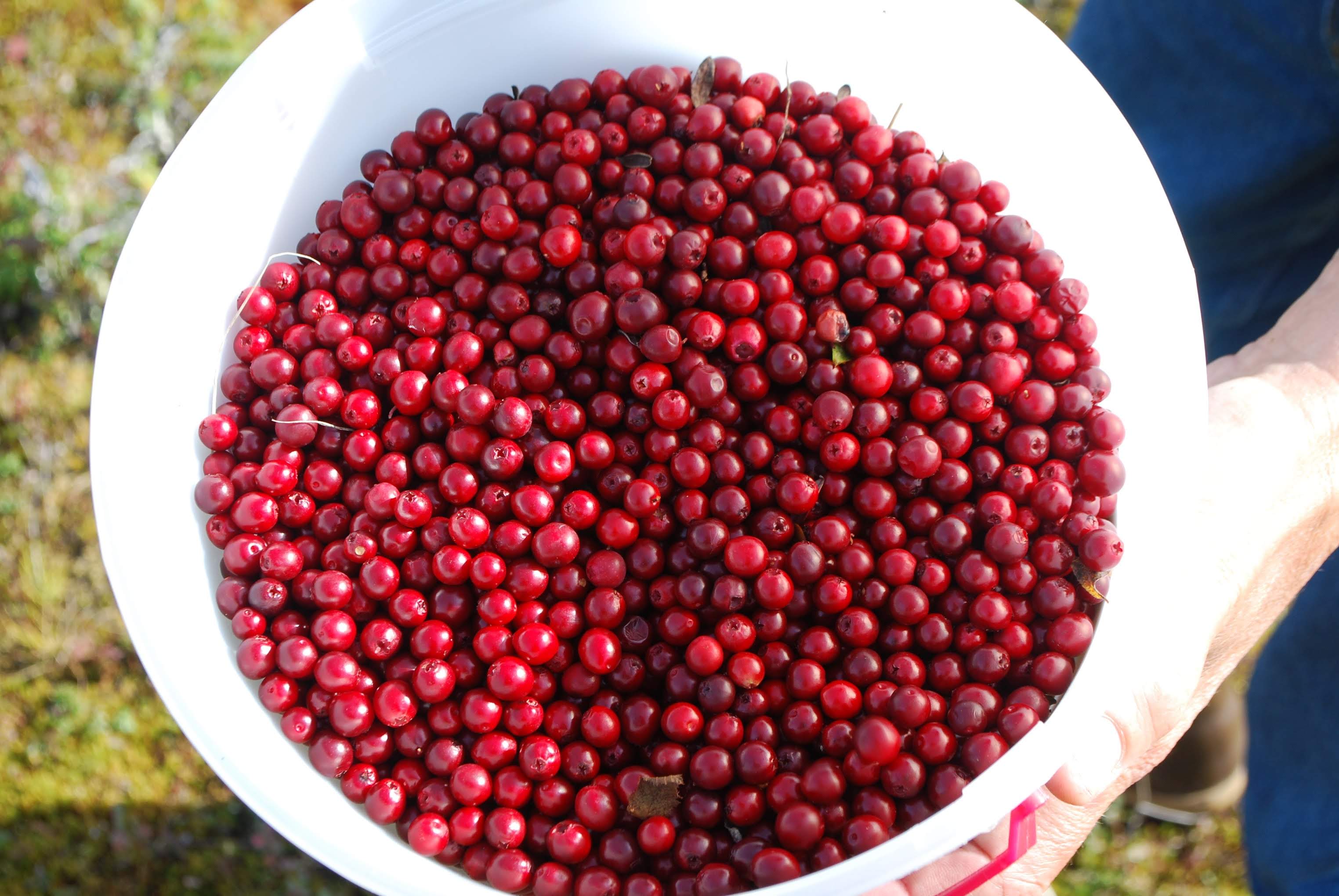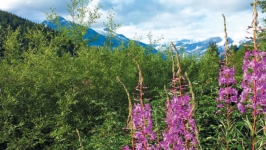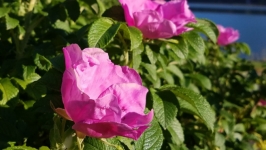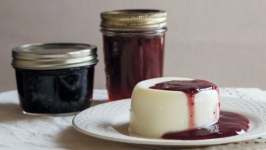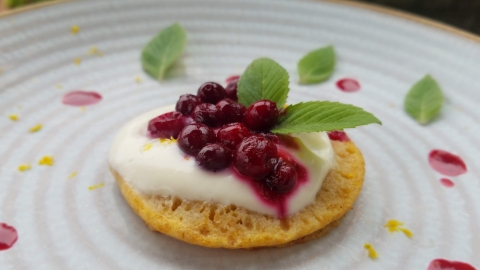Fall in love with Cranberries
“It’s complicated.”
If cranberry and I were to have a relationship status, I think that’s what it would have to say. I love the flavor of cranberries, and even though I have a shameful soft spot for the canned, jellied cranberry sauce of my youth, I crave the fresh stuff, too.
My family comes from Wisconsin and, although I didn’t grow up there, I have spent part of each summer in a tiny cottage on a lake in Northern Wisconsin. The lake is also home to several commercial cranberry farms and the berries are fed with chemical fertilizers. Among the other environmental problems they cause, the fertilizers leach into the lake and make too many weeds grow. The weeds attract ducks, and the ducks bring a parasite that causes super-uncomfortable rashes for swimmers. Unintended consequences abound, and I’ve had a sour taste for commercial cranberries for a while now.
But then I moved to Alaska. Ten years ago this fall, I got to taste my first wild cranberry, and it was love at first bite. Tart, astringent, floral. Except ... I soon learned that this berry wasn’t a “true” cranberry. The delicious berries I had been picking on my hands and knees in secret boggy meadows, that I was baking with, and freezing, and loving, went by many names, most commonly “low-bush cranberry.” They are also known as lingonberry, latin name vacinnium vitis-idaea and dáxw in Tlingit.
True cranberries (vacinnium oxycoccus) and lingonberries share a genus: vaccinium. But they are polyphyletic. This means they share habitat and some features (and even a name), but they are not on the same plant family tree. Oxcycoccus have smaller leaves and are usually trailing a single berry at the end of a stem. They often hide in moss. Vitis-idaea like the same mossy areas, but they have bigger shiny green leaves and the plants grow more in clusters.
Even so, we’re in luck because both grow in Alaska, and both can be used in the same delicious recipes. Cranberries of all kinds are tart and sturdy. They freeze extremely well and are great keepers, even in a dry spot in the refrigerator. Traditionally, they were stored simply at room temperature by submerging them in water.
True cranberries and lingonberries both love boggy ground. You’ll find them growing in wet meadows and very often mixed with moss. Look for shiny, firm berries. Wear rain pants and boots when you go picking, even on a nice day, because you’re in wet territory and you’ll be down on your hands and knees. Many people like to use a berry rake because it speeds the process. I prefer to pick by hand because the rake brings a lot of leaves, moss, and dirt into your harvest and increases the cleaning time later.
Here’s another point in favor of lingonberries. When tested in a 2013 study of Alaska berries comparing their antioxidant abilities, lingonberries were off the charts, scoring 203 points. The next closest neighbor in nutrient punch (with 173 points) was high-bush cranberry (viburnum trillium), which despite its name, is a totally different kind of tart berry growing on tall bushes.
In some habitats, lingonberry grows very close to bearberry (uva-ursi) and they look similar. The leaves on bearberry are bigger, and the fruit isis more orange. Bearberry is edible but not flavorful, and, unlike lingonberry, has a big seed at its center. Last fall I was foraging in unfamiliar territory at dusk, and found it a little hard to tell the difference in the wintry light.
When to pick lingonberries is open to some debate. Those who prefer that they ripen on the vine will not go out before a first frost. However, I once had an expert forager in Petersburg tell me that she picks them earlier, just before the temperature really drops, because the freezer can do the same job as a frost and she beats the birds to the punch. Try both and see which you prefer.
Though lingonberry spots can be well-guarded secrets, I find these berries pretty easily just by looking for the right terrain. Once you know what the leaves look like, you can look out for them while you’re on hikes or picking other berries during the summer. Make a note of a good patch, and come back in the early fall. Or, if you know a cranberry lover, you can offer to help with prep, cooking, cleaning, and canning in order to be invited on a first foray. Then by next year, you’ll have your own spot.
All kinds of cranberries shine in sauces and jams. They have lots of natural pectin. The skins nearly dissolve with cooking, so I find using a food mill unnecessary. The University of Alaska Fairbanks Cooperative Extension Service suggests freezing puréed cranberries for later use. They also note that they dry well after being prepped by a dip in boiling water. Cranberries can be juiced by simmering in water and sweetened to taste for use in cocktails, shrubs, and homemade sodas. Some people love them in savory, especially spicy, applications. Try adding a quarter cup of raw chopped cranberry to a spicy mango salsa. Or make a cranberry chutney.
I love adding lingonberries and cranberries to muffins, vanilla cake, crumbles, pies and tarts. The are good friends with sweeter fruits like apples and pears, and even dried apricots, reducing the need for added sugar.


